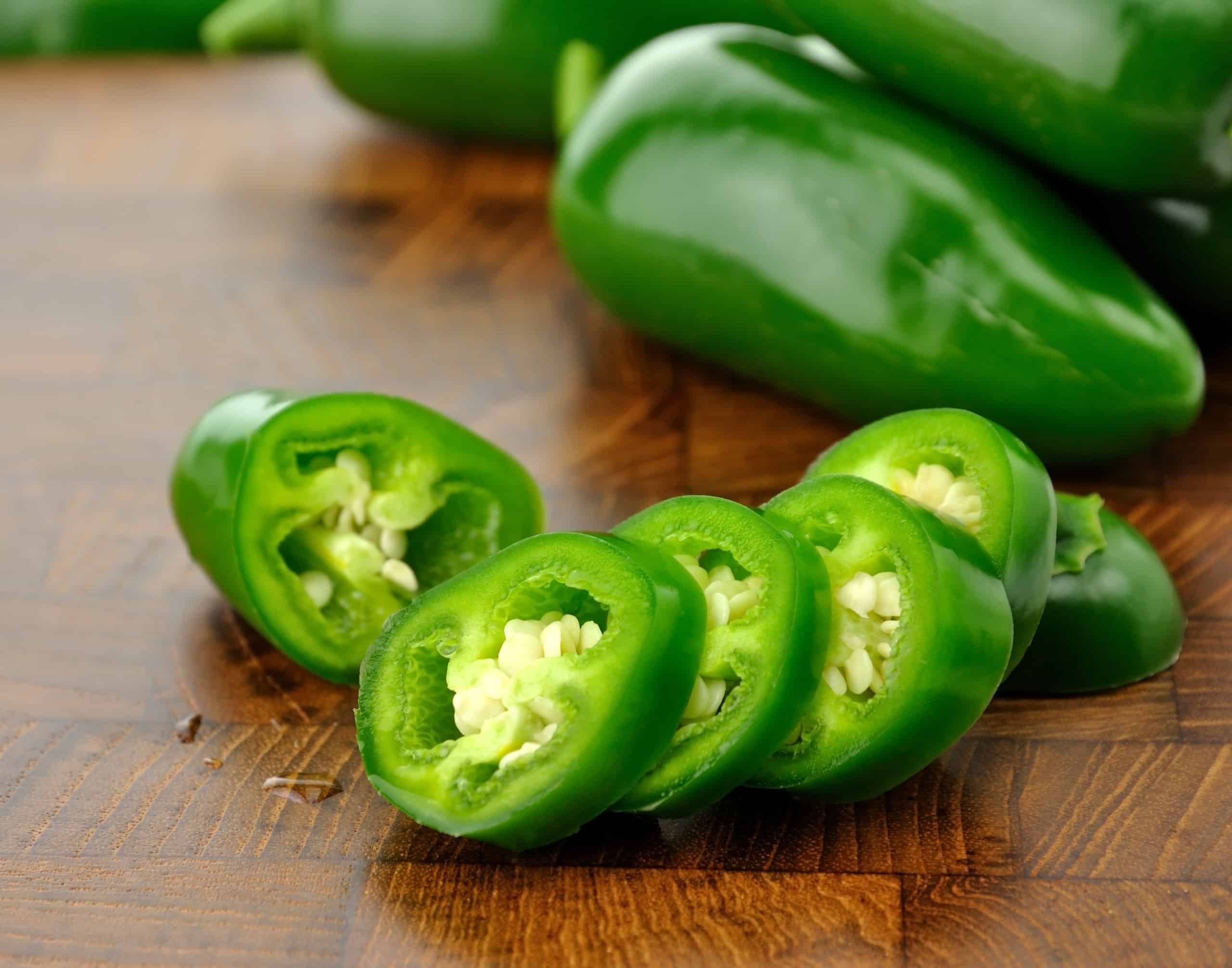You spent so much time and effort planting your jalapeno pepper seeds, ready for a rich harvest at the end of the season. Perhaps you had visions of roasted jalapenos, fresh salsa, or cowboy candy at the end of the summer. Unfortunately, your jalapenos didn’t grow. That is a heartbreaking outcome and can feel very frustrating. Thankfully, there are some common causes for this outcome. Below we will cover the 13 most likely reasons your jalapenos didn’t grow this summer so you can get a killer harvest next year.
1. Poor Germination
Not all seeds will germinate properly. And that doesn’t necessarily mean you did anything wrong. It is just part of nature. However, it is frustrating when seeds don’t germinate. So taking proper steps before you start your seedlings will help.
Solutions:
You can avoid a lot of heartache by testing the seeds before planting them. Pop your jalapeno seeds into a cup of water and leave them for 15 minutes. Scoop off any that remain floating at the end of the test, as they are likely not viable. Feel free to plant those that sink to the bottom.
Another good option is to add a heat mat underneath your soil blocks to help provide adequate warmth.
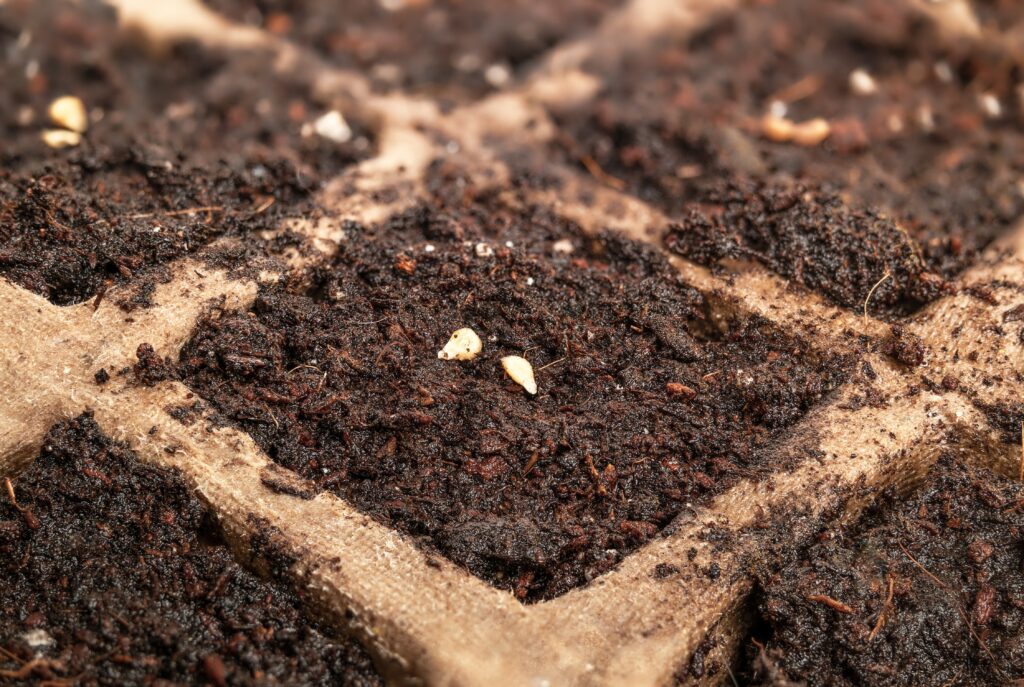
Not all seeds will germinate properly.
©sophiecat/Shutterstock.com
2. Not Enough Sunlight
Proper light exposure is critical for indoor seedlings and once you transplant your jalapeno peppers. Established plants need 6-12 hours of sunlight daily. But seedlings need even more, that is, 14-16 hours of light daily.
When they don’t get enough light exposure, the result is weak plants, fewer flowers, and less fruit.
Solutions:
When starting seedlings indoors, get a grow light to help supplement the natural light. Leave it on for at least 14 hours every day.
Before transplanting, take some time to determine which part of your garden gets plenty of sunlight.
Pick the sunniest spot to place your pot if growing in containers. The good news is that you can move containers as needed throughout the growing season.

Proper light exposure is critical for indoor seedlings.
©enjoy photo/Shutterstock.com
3. Transplant Shock
Most jalapeno pepper plants do best when they get started indoors and then transplanted. However, if you rush to get your plants in the ground once they are large enough, you could inadvertently kill them. Seedlings started indoors are a little more delicate and are not used to the harsher outdoor environment.
Solution:
Harden your jalapeno plants off properly over a week or so.
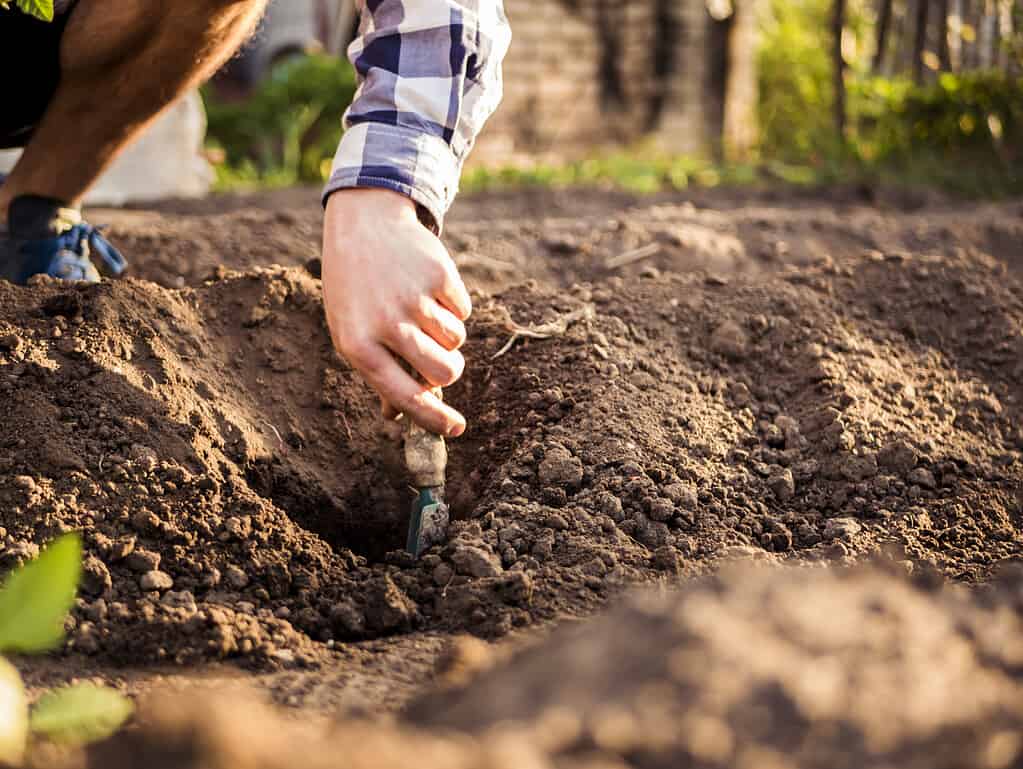
Harden your starts off before transplanting them.
©iStock.com/Михаил Руденко
4. Low-Quality Soil
Jalapeno plants (and all peppers) need high-quality soil to thrive. Too much soil compaction reduces the amount of necessary nutrients reaching your jalapeno plant’s roots. And poor drainage leaves the roots sitting in a moist environment that can result in yellowing leaves, poor growth, or root rot. Additionally, if your soil is lacking nutrients, it will stunt the plant’s growth.
Solutions:
Amend your soil before the planting season to improve the overall quality, allowing more oxygen and nutrients to reach the roots of your jalapeno plant.
Aerate the soil before planting season so the roots can grow better.
Get a soil test done in the off-season. The results will help you determine which amendments are most appropriate.
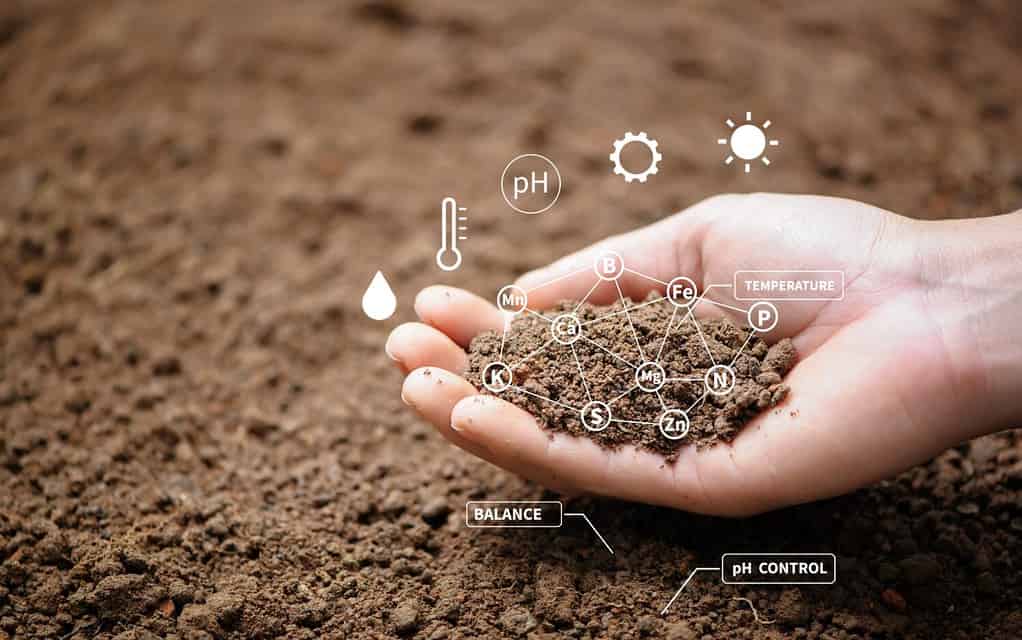
Jalapeno plants (and all peppers) need high-quality soil to thrive.
©Deemerwha studio/Shutterstock.com
5. Planted Too Closely Together
It is so tempting to plant your beloved jalapenos more closely together to try and boost your harvest. Unfortunately, the reality is that the exact opposite will happen if you place them too closely together. Doing so prevents proper air circulation and may reduce sunlight exposure, stunting the plant’s growth.
Solution:
Plant each jalapeno starting at least 18 inches apart.
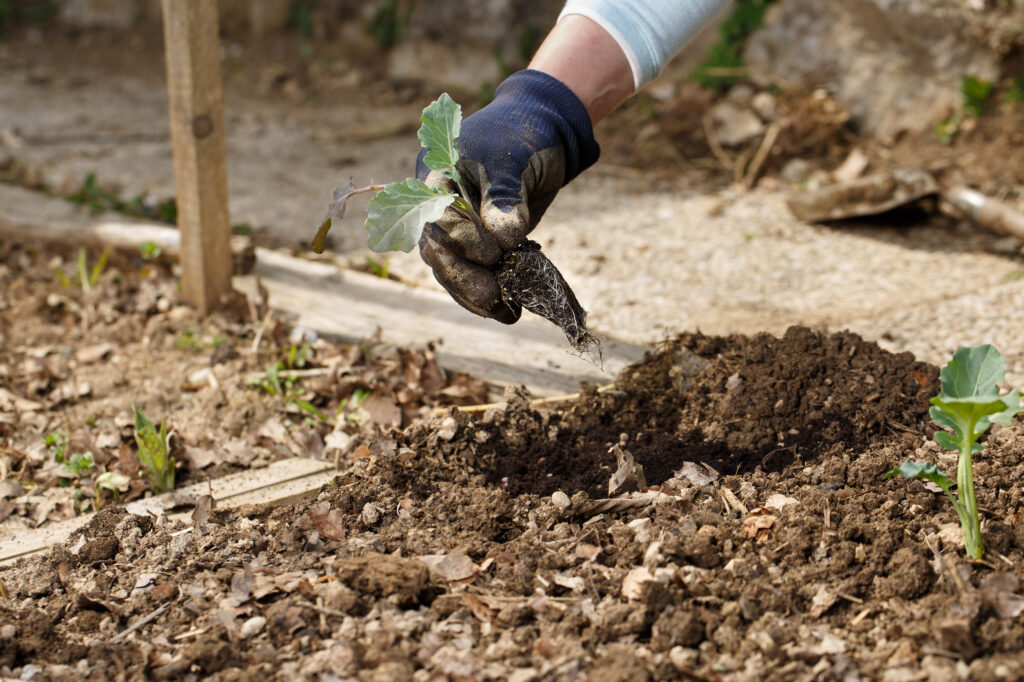
Planting jalapenos too closely together prevents proper air circulation and may reduce sunlight exposure.
©zlikovec/Shutterstock.com
6. Improper Watering
Pepper plants need consistently moist (but not damp) soil, especially when they are first developing. When jalapeno plants dry out, their growth becomes stunted, and fruit doesn’t develop properly. Additionally, the less water you give, the hotter the peppers become. On the other hand, too much water prevents oxygen from reaching the roots.
Solutions:
Water deeply when the top 1 inch of the soil dries out.
Amend the bed before planting each year to help aerate the soil.
Mulch around the base of the plant to retain soil moisture.
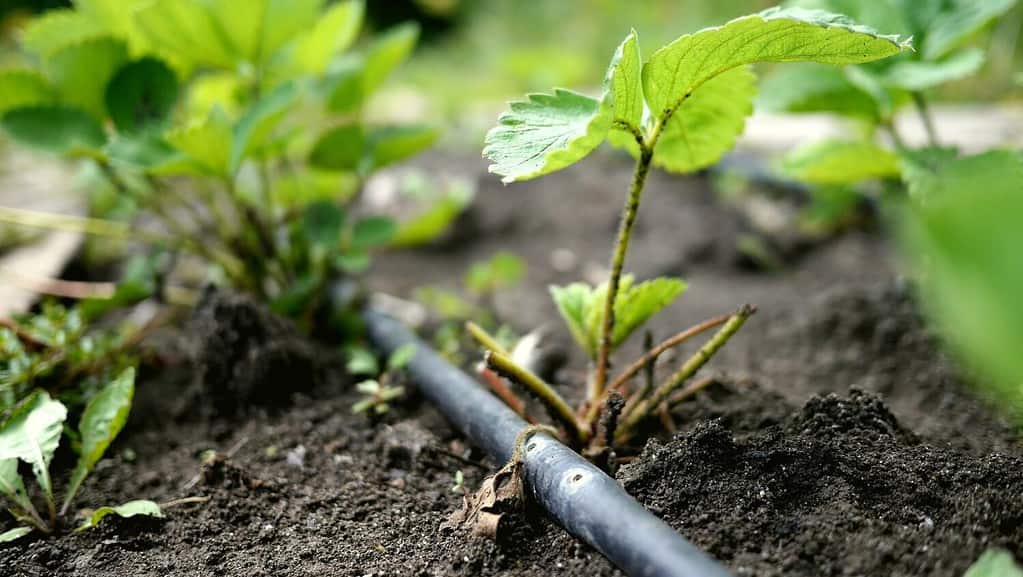
Pepper plants need consistently moist soil, especially when they are first developing.
©Nadeene/Shutterstock.com
7. Lack of Pruning
Contrary to popular belief, pruning does not harm your pepper plants. In fact, if you fail to prune your pepper plants back, they will not get enough air circulation between the leaves. In turn, this will lead to increased susceptibility to diseases and pest pressure.
Solution:
Pinch back new growth to direct the plant upward so it becomes bushier.

Make sure to prune jalapeno plants to develop bushy plants.
©Quang Ho/Shutterstock.com
8. Disease
Jalapeno plants are susceptible to disease, especially in hotter and humid climates. This vulnerability grows if the plants are situated too closely together or have not gotten pruned. Taking these preventative measures is a good first step. But it may not solve all the problems. You could need to take additional steps if the disease sets in.
Solutions:
Do not practice overhead watering, especially in the evening or humid climates. Water from below or install irrigation.
Take the time to practice proper spacing.
Remove diseased parts as soon as you see them to prevent any spread.
Discard the whole plant, if necessary, to save others from suffering the same fate.
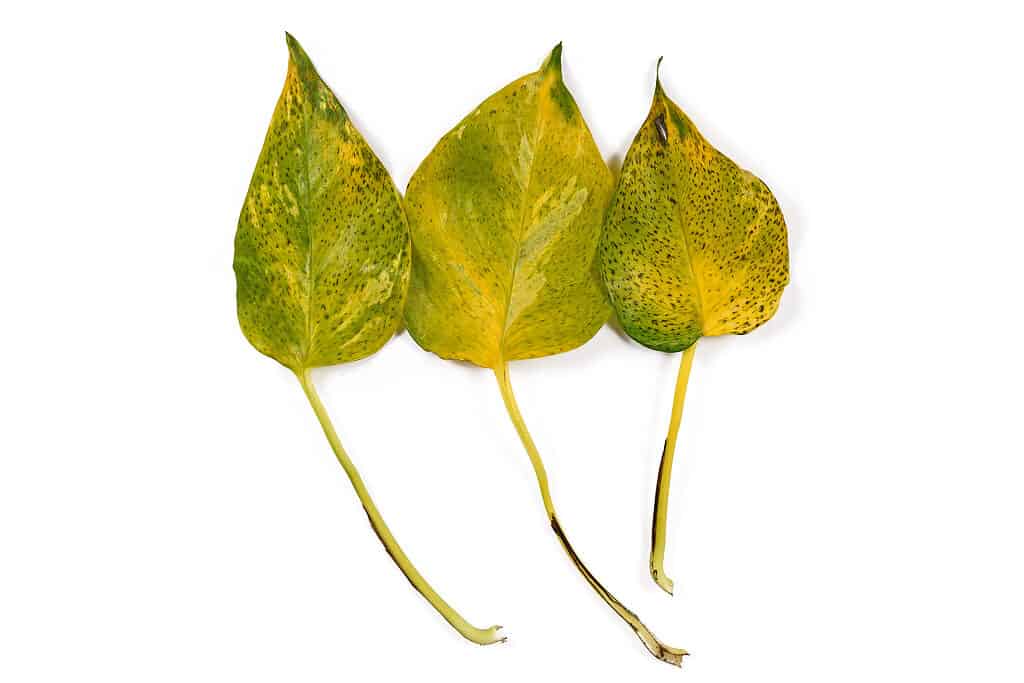
Watch for signs of disease, like yellowing leaves.
©Firn/Shutterstock.com
9. Pests
Sometimes pest pressure can result in unsightly plants. But other times, pest pressure can overwhelm the plant and prevent it from growing properly. Keeping a close and watchful eye on your jalapeno plants will help you stop problems before they become severe. Growing pest pressure could result in stunted growth, lack of fruit production, or death.
Solutions:
Perform routine inspections to look for holes, discoloration, chewed leaves, and eggs on the underside of leaves.
Practice companion planting to reduce pest pressure.
Use organic insecticidal soap to kill off unwanted visitors.

Pests, like the aphids pictured, can plague your jalapeno plants.
©iStock.com/Wirestock
10. Flowering Too Early
Those first few flowers that show up on your jalapeno plants are exciting! After all, it means an early harvest, right? Not necessarily. When your jalapeno plants start flowering too early, it could reduce overall pepper production.
Solutions:
Pinch off any early flowers (as hard as it is) until the plant grows larger to help promote a larger harvest.
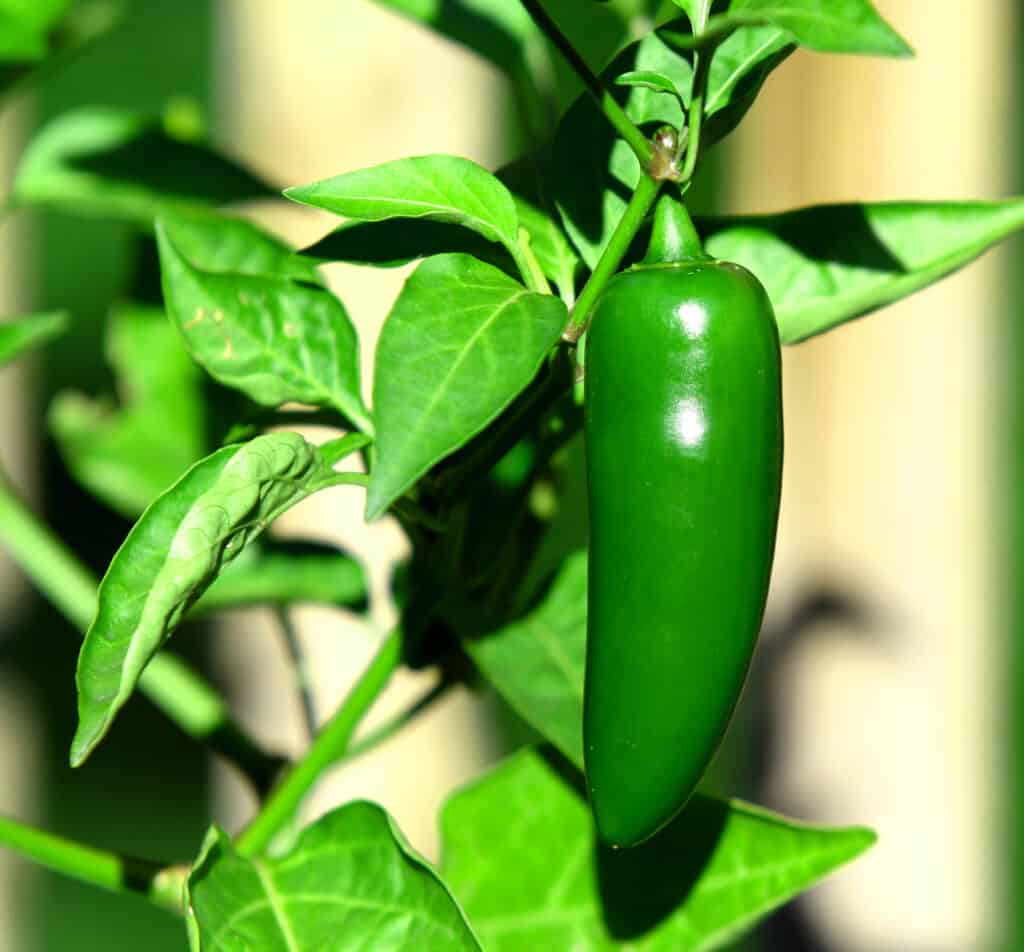
Pluck any early flowers to ensure an abundant jalapeno harvest.
©iStock.com/Victor Ward
11. Bad Companion Plants
While companion planting can help your plants thrive in many cases, other times, plants don’t get along at all. You may hinder its growth f you plant a foe too close to your jalapeno pepper plant.
Solutions:
Research the plants you want to plant near your jalapenos to ensure they will get along.
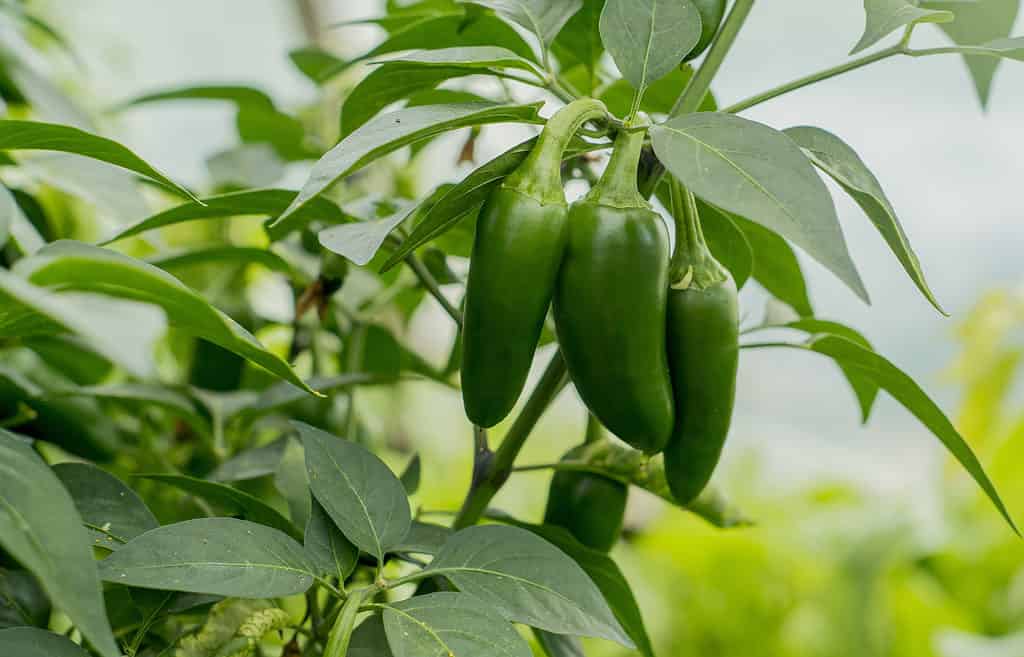
Plant the right companions for your alapeño peppers.
©Gatis Grinbergs/Shutterstock.com
12. It’s Too Hot or Too Cold
Jalapeno plants can’t tolerate high heat even though they love warm weather. Your plants will suffer if you have extended stints above 85 degrees Fahrenheit. Likewise, excessive cold or wet environments will stunt the plant.
Solutions:
Protection is your best bet – on both ends of the spectrum. Provide shade cloth during periods of heat and protection during cold spells.

Use a shade cloth to help protect your jalapeno plants during hot weather (like this one over a flower).
©VPales/Shutterstock.com
13. Improper Fertilization
Jalapeno plants need nutrient-rich soil to thrive. Their growth (and your harvest) will suffer if they don’t get that. On the flip side, too much fertilizer applied too frequently can also damage your plants.
Solutions:
Test your soil at the start of the season to discover any deficiencies. Use targeted fertilizer throughout the season to help fix that.

Make sure to fertilize your jalapeno plants properly for them to thrive.
©iStock.com/
Summary of the 13 Most Likely Reasons Your Jalapeno Plants Didn’t Grow
| Number | Reason |
|---|---|
| 1 | Poor Germination |
| 2 | Not Enough Sunlight |
| 3 | Transplant Shock |
| 4 | Low-Quality Soil |
| 5 | Planted too Closely Together |
| 6 | Improper Watering |
| 7 | Lack of Pruning |
| 8 | Disease |
| 9 | Pests |
| 10 | Flowering too Early |
| 11 | Bad Companion Plants |
| 12 | It’s Too Hot or Too Cold |
| 13 | Improper Fertilization |
Thank you for reading! Have some feedback for us? Contact the AZ Animals editorial team.

